New Orleans Saints
Netflix releases “The Underdog,” a much-anticipated documentary about Drew Brees. slated for publication on the 25th

Netflix releases “The Underdog,” a much-anticipated documentary about Drew Brees. slated for publication on the 25th
Below is a comprehensive, extensively detailed article on Netflix’s upcoming documentary, “The Underdog,” a much-anticipated deep dive into the life and legacy of NFL superstar Drew Brees. The article explores the background of the documentary, its cultural impact, production insights, and reflections on Brees’s career both on and off the field.
Netflix’s Bold New Venture: “The Underdog”
Netflix has once again raised the bar in its commitment to telling powerful and inspirational stories by announcing the release of “The Underdog,” an in-depth documentary centered on NFL legend Drew Brees. Slated for publication on the 25th of this month, the film promises to be an immersive journey into the life of a man who transformed himself from an underdog into one of football’s all-time greats. With its striking narrative, compelling interviews, and unprecedented access to Brees’s personal and professional milestones, the documentary is already generating buzz among sports enthusiasts and documentary aficionados alike.
The Vision Behind “The Underdog”
At its core, “The Underdog” is more than just a chronicle of Brees’s illustrious career. It is a celebration of perseverance, resilience, and the human spirit’s capacity to overcome adversity. This documentary aims to capture the nuances of a life marked by both triumphs and tribulations, focusing on not only his record-breaking achievements on the field but also the values that have shaped his identity off the gridiron.
Key Themes Explored in the Documentary:
Perseverance Against Odds: Drew Brees’s journey is defined by overcoming obstacles. From battling early career setbacks to redefining the standards of what it means to be a leader, his story underscores the relentless pursuit of excellence.
Transformation and Reinvention: The film delves into Brees’s evolution as an athlete and a public figure. It examines the moments that catalyzed his transformation from a talented prospect to one of the most respected quarterbacks in NFL history.
Legacy and Impact: More than statistics and accolades, the documentary seeks to reflect on Brees’s impact on the community and his philanthropic efforts. His off-field contributions have helped shape numerous lives, making his legacy multifaceted and enduring.
By weaving together personal interviews, archival footage, and behind-the-scenes content, “The Underdog” offers viewers a panoramic view of Brees’s life, capturing the highs, lows, and in-betweens that define an extraordinary career.
Behind the Scenes: The Making of “The Underdog”
A Collaborative Effort
One of the most compelling aspects of the documentary is the level of access granted by Drew Brees himself. In an unprecedented collaboration with Netflix, the filmmakers were given unparalleled access to intimate moments, both on and off the field. This insider perspective is a testament to Brees’s trust in the creative team’s vision and his willingness to share his deeply personal story with the world.
Production teams worked tirelessly to archive and restore decades-old footage, incorporating never-before-seen videos and interviews that reveal the evolution of a sports icon. Directors and producers have spoken at length about their commitment to authenticity, explaining that every frame of the documentary was designed to highlight the real struggles and triumphs of a life lived in the public eye.
Creative Direction and Cinematic Style
The film is directed by a renowned documentarian known for a refined approach to storytelling. Viewers can expect a cinematic experience that blends the energy of professional sports with the intimate, reflective tone of a personal biography. Throughout the film, creative techniques such as slow-motion replays, dynamic animations, and layered audio interviews are employed to evoke emotional responses and emphasize key moments in Brees’s career.
The narrative structure of “The Underdog” is both chronological and thematic. It begins with Brees’s humble beginnings and follows his journey through college football, his early years in the NFL, the triumphant seasons with his team, and ultimately, his enduring impact beyond the field. Each segment is punctuated by insightful commentary from former teammates, coaches, sports journalists, and even rival athletes who recognize Brees’s unmatched spirit.
Drew Brees: The Making of a Legend
Early Life and Athletic Beginnings
Before the bright lights of the NFL, Drew Brees was known as a tenacious young athlete with a fierce passion for football. Growing up in a modest neighborhood, Brees faced many of the challenges typical of a child who had to carve his own path to success. Despite limited resources, his talent was evident early on, and he quickly established himself as a standout performer on the high school gridiron.
In interviews featured in the documentary, Brees recalls the tight-knit community that supported him, the mentors who believed in his abilities, and the rigorous training routines that laid the foundation for his future successes. This segment of the documentary not only celebrates his natural athletic ability but also paints a picture of a young man driven by determination and the desire to make a difference in his community.
The College Years: Building a Reputation
Brees’s time in college was marked by a rapid ascent in the world of collegiate football. His exceptional performance on the field earned him accolades and set him apart as a promising quarterback. The documentary provides a detailed account of his college years, highlighting the pivotal games, critical decisions, and turning points that ultimately led to his selection in the NFL draft.
Former college coaches and teammates share behind-the-scenes stories that offer insights into Brees’s work ethic and resilience. These personal recollections are interwoven with archival footage from college games, providing both a statistical and emotional look at how Brees’s early successes were precursors to his future dominance in professional football.
NFL Ascension and Career Highlights
Once in the NFL, Drew Brees quickly established himself as a player who redefined what was possible on the gridiron. His career is studded with milestones—from record-breaking passing yards to game-winning drives that secured his legacy as one of the sport’s most revered quarterbacks.
Key career highlights featured in the documentary include:
Record-Breaking Performances: Detailed analysis of some of Brees’s most memorable games, including his role in the resurgence of a struggling franchise, where his leadership was a turning point.
Injury and Resilience: The film does not shy away from the challenges he faced, documenting the physical and mental hurdles overcome after significant injuries. These segments provide a nuanced look at the toll that professional sports can take, as well as the incredible drive it takes to come back from adversity.
Leadership on and off the Field: Interviews with teammates and coaches illustrate how Brees’s leadership extended beyond statistical achievements. His ability to inspire, mentor, and uplift others is a recurring theme that resonates throughout the documentary.
The film’s narrative pays homage to the many moments when the underdog defied expectations, setting new standards for athletic excellence. His style of play—characterized by precision, quick decision-making, and an almost preternatural ability to read the game—is dissected in a series of analytical segments that combine expert commentary with visual graphics and replays.
Impact Beyond the Football Field
Philanthropy and Community Engagement
Beyond his on-field success, Drew Brees has made significant contributions to communities across the country. A major portion of the documentary is dedicated to exploring his philanthropic ventures and community outreach initiatives. Brees’s foundation, which supports education, health, and youth development programs, is highlighted as a testament to his commitment to giving back.
The film captures heartwarming stories from individuals whose lives have been transformed by Brees’s generosity. Interviews with beneficiaries, community leaders, and organization partners provide a multi-dimensional view of how one person’s success can ripple outward, making a lasting impact on society.
Inspiration for the Next Generation
“The Underdog” is not simply a recounting of past glories; it is an inspirational manifesto for aspiring athletes and young dreamers. Through his journey, Brees exemplifies how determination, hard work, and an unwavering commitment to one’s goals can pave the path to success—even when the odds seem insurmountable.
The documentary’s narrative is interspersed with motivational messages intended to inspire viewers to pursue their own dreams. It challenges the conventional narrative of success, urging audiences to redefine what it means to be an “underdog” and encouraging them to see every setback as an opportunity for growth. Educational experts and sports psychologists also offer commentary on the psychological resilience required to succeed at the highest levels of competitive sports.
The Role of Netflix in Shaping Modern Documentary Storytelling
Netflix has emerged as a powerhouse in original documentary productions, and “The Underdog” is poised to continue that legacy. The streaming giant has consistently demonstrated its commitment to high-quality, thought-provoking content that transcends traditional genre boundaries.
Innovative Storytelling and Production Techniques:
Narrative Depth: Netflix documentaries are known for their deep dives into personal stories. “The Underdog” takes this to the next level by integrating personal reflections, expert analysis, and never-before-seen footage that brings the viewer closer than ever before to the subject.
Technical Excellence: High-definition cinematography, innovative editing techniques, and a meticulously crafted sound design ensure that every viewing experience is as visually and aurally immersive as it is emotionally impactful.
Global Reach: By making the documentary available on its platform, Netflix ensures that Brees’s story will be accessible to a worldwide audience. In doing so, it promotes cross-cultural exchanges and universal values of resilience, integrity, and perseverance.
The success of Netflix’s documentary slate has redefined the standards of non-fiction storytelling, setting new benchmarks for quality and engagement. “The Underdog” is expected to be no exception and will likely become a case study in effective sports storytelling, merging entertainment with inspiration and education.
Audience Reception and Anticipation
Early reactions to news of the documentary have been overwhelmingly positive. Social media platforms and sports forums are abuzz with anticipation, with fans eagerly discussing the potential impact of the film. Many express excitement not just for a narrative about a sports legend, but for a story that humanizes Drew Brees, portraying him as a multifaceted individual who has navigated life’s challenges with humility and grace.
Critics are already lauding the documentary for its balanced portrayal, noting that it avoids the pitfalls of oversimplification. Instead, it provides a nuanced narrative that respects the complexity of Brees’s journey. This careful construction of the documentary is expected to resonate well with a broad audience—ranging from sports aficionados to those who seek stories of personal triumph against overwhelming odds.
Looking Ahead: Why “The Underdog” Matters
Cultural Resonance:
The documentary’s release comes at a time when stories of resilience and transformation are especially poignant. In an era marked by rapid social changes and global challenges, “The Underdog” offers a timely reminder that individual determination can lead to monumental achievements. Drew Brees’s story is not just one of athletic prowess; it is a reflection on the broader human condition—the universal struggle to overcome limitations and to redefine what is possible.
Legacy and Inspiration:
For many, the documentary will serve as a bridge connecting past athletic triumphs with future aspirations. The film’s exploration of Brees’s career milestones is interwoven with personal anecdotes and life lessons that have the power to inspire the next generation of athletes and leaders. It is a celebration of hard work, community, and the indomitable spirit of striving against the odds.
Broadening the Scope of Sports Documentaries:
By focusing on the complete narrative arc of Drew Brees’s life, “The Underdog” challenges the conventional boundaries of sports documentaries. It is not merely a record of statistics and game highlights, but rather a deep exploration of character, identity, and transformation. This multidimensional portrayal enriches the audience’s understanding, inviting viewers to reflect on their own journeys and the hidden obstacles they may overcome.
Conclusion
Netflix’s upcoming documentary, “The Underdog,” is poised to become a landmark piece in the genre of sports biographies. Over the course of more than 1000 words, this in-depth film promises an immersive exploration into the life of Drew Brees—a man whose story transcends football and speaks to the relentless power of perseverance, leadership, and community. With unparalleled access to private moments, expert insights, and archival footage, the documentary encapsulates not only the making of a sports icon but also the evolution of a man whose journey exemplifies that true greatness is forged in the crucible of adversity.
As viewers anticipate its release on the 25th, “The Underdog” is expected to resonate on many levels—celebrating athletic excellence, inspiring personal transformation, and reaffirming the values that elevate human endeavor. In chronicling the remarkable story of Drew Brees, Netflix has created more than just a documentary—it has crafted an inspirational narrative that will undoubtedly leave a lasting impact on audiences around the world.
Whether you are a die-hard football fan, an admirer of inspiring stories, or someone who values the deeper lessons of life, “The Underdog” offers something profound: it is a testament to the enduring power of hope, resilience, and the belief that every underdog can rise to greatness.
With its scheduled release set to capture hearts and spark conversations, “The Underdog” is not only a celebration of a storied career—it is a cultural event that underscores Netflix’s dedication to innovative storytelling and the timeless appeal of transformative personal narratives. Viewers around the globe will soon have the opportunity to witness the unfolding of Drew Brees’s legacy in what promises to be one of the most compelling documentaries of the year.
New Orleans Saints
Saints are wasting Spencer Rattler’s surprising start to the season
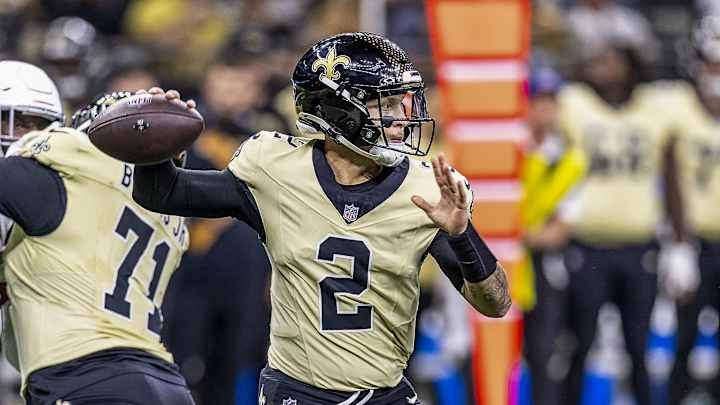
Saints are wasting Spencer Rattler’s surprising start to the season
The New Orleans Saints were projected to lose their first four games of the season by many. What wasn’t expected is Spencer Rattler playing well enough to win in both of the first two games. Unfortunately, the Saints are right where everyone predicted they’d be, 0-2. They’ve wasted winning performances by Rattler, and the Saints’ biggest obstacle has been themselves.
No one expected Rattler to play as well as he has. This isn’t to say he’s a top-5 quarterback, but Rattler has played well enough to fit the “wins aren’t a quarterback stat” argument. It hasn’t been perfect, but it’s hard to lay blame at his feet for either loss. Matter of fact, Rattler had the best game of his career against the San Francisco 49ers.
In both weeks, the Saints have struggled to get off the ground early. In both weeks, the Saints had the ball with a chance to win in the final two minutes. In both weeks, the Saints failed to complete the comeback. Wash and repeat.
Early mistakes prove costly for the Saints
You can point to Juwan Johnson not catching the ball in the end zone versus the Arizona Cardinals. There are multiple moments that heavily impact a game, but with a play of that magnitude at that juncture of the game, it’s hard to find a bigger moment. Against San Francisco, there isn’t necessarily that one moment to point to.
The Saints continuously kept stubbing their toe with errors in critical moments. Those errors came in different forms. You could point to penalties, points being left on the board, keeping drives alive. Let’s point at all of them, as those errors were the Saints’ downfall.
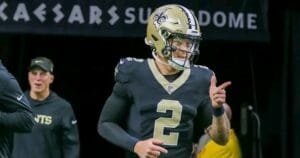
For the second week in a row, penalties have proven costly. A week ago the Saints had the same amount of penalties as points, 13. The penalties actually outnumber the points if you count the penalties that weren’t accepted.
Those 13 infractions tied the Tennessee Titans for the most penalties in the NFL in Week 1. The Saints brought referees to practice this week, but the penalties continued, in critical moments at that. The Saints gave up two first downs on third down due to flags in the secondary. The Saints also took two first downs away from themselves due to penalties.
It wasn’t just penalties. Johnson had a few drops early. There was no defender around this time. Blake Grupe missed yet another “sure thing.” These are players you’re going to have to count on, and they’re making critical mistakes. That’s not winning football, and you can’t put that on the QB. Worst part about it is the difficulty is likely about to go up. That makes the missed opportunities even harder to swallow.
Saquon Barkley Sounds Off on Former Teammate Daniel Jones’ Early Success With Colts
The Daniel Jones era of the New York Giants was forgettable, to say the least. Even though he showed flashes of promise at times and had Saquon Barkley coming out of the backfield, the Giants never got going, but now he’s begun turning things around while starting fresh with the Indianapolis Colts.
New Orleans Saints
Saints legend Drew Brees offers praise for Spencer Rattler as the team’s starting QB
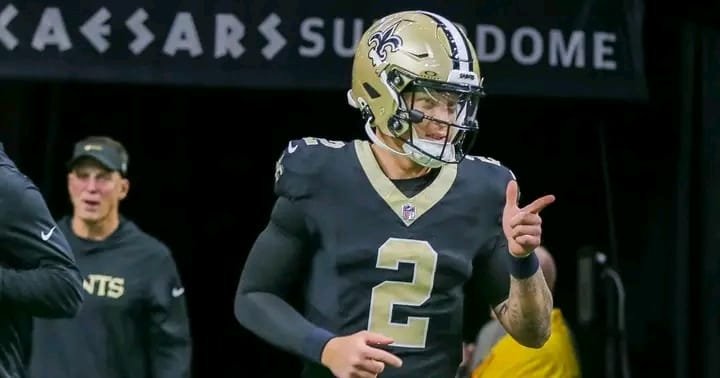
Saints legend Drew Brees offers praise for Spencer Rattler as the team’s starting QB
Spencer Rattler has one very important admirer.
Making an appearance on WWL-AM Thursday with Bobby Hebert, New Orleans Saints legend Drew Brees said he’s really liked what he’s seen out of Rattler in the start to the 2025 season.
“Spencer is a really dynamic player,” Brees said. “Stature wise, he’s a lot like me from the perspective of you’re not the tallest guy, but you’re athletic, you can move. I love the way he throws the ball. He’s made some plays running the football that have been really impressive over the last couple of weeks, getting some key first downs, breaking tackles.
“Just some gutsy performances. It hasn’t resulted in wins, but we’ve been right there.”
Rattler earned the Saints starting quarterback job out of training camp, beating out second-round pick Tyler Shough. He is one of eight quarterbacks who have started a game for the Saints since Brees retired following the 2020 season.
A fifth-round pick in last year’s draft, Rattler is still looking to lead the Saints to his first win as a starting quarterback. New Orleans went 0-6 with him as a starter last season, albeit with an extremely depleted roster, and is off to an 0-2 start this season.
But Brees stressed to be patient with the young quarterback, emphasizing the competitiveness the Saints have shown to start the season with Rattler operating the offense: New Orleans has had chances to tie or take the lead in the closing minutes of each of their two losses to start the season.
“They’re right there, I mean literally right on the cusp,” Brees said. “… They just have to find a way to break the seal, get that first win, start developing some confidence and momentum.”
Through two games this season, Rattler is completing 65 % of his passes with three touchdowns against zero interceptions. As a runner, he’s added 43 yards on eight carries, with two of those runs converting critical down and distance situations last week against the 49ers.
“When I watch Spencer play, he’s got all the traits,” Brees said. “He’s got some moxie, he plays with some swagger, kind of a chip on his shoulder. The guys seem to like him and play hard around him. He can make all the throws, he can make plays with his legs, he’s not afraid to take off and run and lower his head to go get the first down.
“For all those reasons, I think we have to be patient with him and recognize that, man, it’s going to happen, and hopefully it happens soon.”
New Orleans Saints
Saints set to sign new lease to stay in the Superdome. Here’s a look inside the deal.
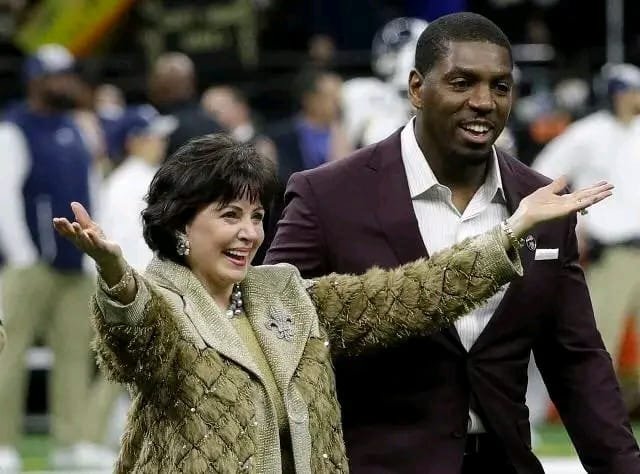
Saints set to sign new lease to stay in the Superdome. Here’s a look inside the deal.
A long-term deal between team officials and Gov. Jeff Landry’s allies on the Superdome Commission is expected within days.
The New Orleans Saints and Gov. Jeff Landry’s team are closing in on a new long-term lease of the Caesars Superdome that aims to keep the franchise rooted in New Orleans for at least another decade.
The deal, which three sources familiar with the talks say could be announced as soon as next week, culminates more than a year of grueling, often contentious negotiations between the Saints and the Louisiana Stadium and Exposition District, the board that oversees the state-owned Superdome.
Neither the Saints nor the LSED, known as the Superdome Commission, have announced specifics publicly. But the sources close to the negotiations say the agreement calls for a 10-year lease followed by four 5-year extensions, with the Saints retaining the right to exercise each extension. If all the extensions are agreed upon, it would run through 2055
The deal adds a new provision—absent from the Saints’ current lease—requiring arbitration and potential “equitable damages,” measures designed to discourage any future owner from moving the team out of New Orleans. The exact amount of that relocation penalty hasn’t been finalized, but the sources said it could reach $250 million.
The deal also involves other key provisions, which could be modified as the sides hash out final details. Among them: the Saints’ share of revenues from stadium concessions on game days; terms of the state lease for offices at Benson Tower; and other future revenue streams and costs.
The two sides have wanted to sign the lease by Sept. 17 because that’s the day an NFL owners sub-committee on special events will meet to begin considering who will host Super Bowls beyond 2028. After receiving broad acclaim for hosting the game in February, New Orleans hopes to be invited to bid on the 2031 Super Bowl. But it can only do so if the Saints have a signed lease agreement in effect for the year of the game, according to league policy.
The new agreement will end a negotiation that began shortly after Landry took office in January 2024. Saints officials negotiated a similar lease extension with officials from the administration of Gov. John Bel Edwards but didn’t reach a long-term agreement before his term ended.
Saints, state closing in on long-term lease extension, major Superdome renovation
Exterior shots of the Louisiana Superdome colored with lights for Carnival and the BCS game in New Orleans, on Jan. 4, 2008.
CHRIS GRANGER
“We remain optimistic that a final agreement will be reached soon and look forward to announcing it at the appropriate time,” Greg Bensel, a spokesperson for the Saints, said in a text. “Until then, negotiations with the State remain ongoing, and it would be premature to comment on specific deal points.”
Superdome Commission officials also declined to comment on the deal talks.
Shane Guidry, a businessman who is a close advisor to Landry, declined to comment on specifics but said agreement on lease terms is near. “We’re at the finish line,” he said. “We want to get it done for the Saints, the taxpayers, the state of Louisiana, the NFL, everybody.”
A closely watched deal
The Superdome lease is always closely watched by business and civic leaders, but for Saints fans the real question is what it means for the team’s long-term future in New Orleans.
This round of talks carries added weight: Because the lease could run through 2055, it will likely be in place past Gayle Benson’s lifetime — the trigger for an NFL rule that will require the team to be sold to a new owner.
Landry’s negotiating team has sought to bolster the state’s legal position in keeping the Saints here for the foreseeable future, the sources said.
Benson, 78, has vowed to keep the team in New Orleans while she is the owner. And in a series of 2021 interviews to discuss the Saints succession plans, Dennis Lauscha, the Saints’ president and the executor of the Benson estate, committed to keeping the Saints in New Orleans. He has also said that the terms of this lease negotiation would be crucial to keeping a future owner here. But it remains unclear whether the new deal will have strong enough language to prevent the team from being moved by the team’s next owner beyond those 10 years.
Lauscha has been the lead negotiator for the Saints, facing off with Rob Vosbein, appointed by Landry to serve as the Superdome Commission’s chair. Vosbein is a private attorney for Guidry. Also negotiating for the state has been Shawn Bridgewater-Normand, a lawyer and the wife of radio host Newell Normand.
The Superdome Commission is expected to formally approve the deal, which will replace the current agreement that consists of a 15-year lease followed by a 5-year extension that ends in 2030.
Deals aim to avoid relocation
The price of professional sports teams has risen dramatically in recent years, making ownership the domain of multibillionaires. Forbes valued the Saints at $5.3 billion in its annual analysis of NFL franchises, a 20 percent increase from a year ago.
Lawyers and executives with experience in stadium lease negotiations in other NFL markets said that any lease deal would likely have to include ironclad legal terms and financial penalties after 10 years to make it difficult for a future owner to move the Saints.
The new lease would require a new owner who moves the team to pay state taxpayers as much as $250 million to cover most of the $300 million that the state owes in bonds for the recent Superdome renovation, said the people close to the negotiations. That penalty steps down sharply after the first 10 years.
Mark Poloncarz, who has negotiated two lease extensions with the Buffalo Bills as the Erie County executive, said a more important question is whether the new lease includes language that would allow the state to go to court in New Orleans to prevent a new owner from moving the team.
“Unless there’s some clause that allows the community and the state to keep the team there, they could be gone after 10 years,” Poloncarz said.
In 2021, Benson said her instructions to Lauscha are clear when it comes to new ownership.
“That’s going to be one of our stipulations when we sell the team — that it stays here,” said Benson at the time. “Dennis won’t sell it to another person that wants to take it away.”
Louisiana Governor Jeff Landry, center, and his wife, Sharon LeBlanc, talk with New Orleans Saints and Pelicans owner, Gayle Benson, during the King’s Luncheon held at the Kennedy Center for the Washington Mardi Gras on Thursday, January 25, 2024. (Photo by Chris Granger, The Times-Picayune)
(Photo by Chris Granger The Times-Picayune)
While negotiators aren’t yet publicly outlining the terms of the new lease, two recent stadium deals offer some comparative terms.
In 2023, the Buffalo Bills signed a 30-year lease with language that discourages a new owner from moving the team. A year later, the Jacksonville Jaguars also signed a 30-year deal with similar terms.
Nellie Drew, a professor at the University at Buffalo School of Law who has studied the leases of the Bills and other teams, said cities and states often seek clauses in the leases that would make it harder for teams to relocate.
One defense is a legal term known as “equitable relief,” which allows the government to file suit to block the team from leaving. The Bills agreed to allow this type of lawsuit in the lease and to have the lawsuit be heard in a local or federal court in the Buffalo area.
“There is no way any judge in western New York is going to let the Bills walk,” Drew said.
If a judge did allow the team to leave, the lease requires the Bills to pay back taxpayers the full $850 million they spent to build a new stadium if the departure takes place within the first 14 years of the lease signing. In future years, the amount the new owner would have to pay taxpayers would drop by 6.25% per year. By year 30, that amount would reach zero.
In the Saints’ case, taxpayers spent about $380 million to pay for the most recent renovation of the Superdome, while the Saints ponied up an additional $180 million.
The financial penalty in the new lease of up to $250 million for relocating the Saints would probably not be a deterrent for a new owner given the vast sums required now to purchase a team, industry experts said. But it’s a significant change from the current lease, which did not have a similar financial penalty.
That lease took effect in 2010. The deal included an $85 million stadium upgrade that gave the Saints more ways to make money off games in the Superdome while capping direct subsidies to the team at $6 million a year. It also transferred naming rights at the stadium to the team, which the Saints have since sold to Mercedes-Benz and Caesars for millions of dollars annually.
In lieu of constructing a new stadium, which can cost billions of dollars, the sides have continued to pour money into upgrading the Superdome, which opened in 1975 and is the fifth oldest stadium in the NFL. The state completed a $560 million renovation of the facility in 2024, in time to host Super Bowl LIX this year. It was the stadium’s eighth Super Bowl, the most of any venue in NFL history.
New Orleans Saints
Kellen Moore must fix massive issue that he’s responsible for as soon as possible if the Saints want to win any games going forward
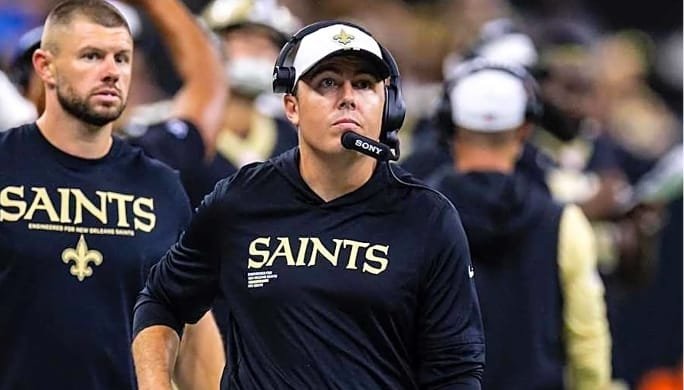
Kellen Moore must fix massive issue that he’s responsible for as soon as possible if the Saints want to win any games going forward
Fans of the New Orleans Saints have plenty of emotional ammunition to be frustrated with officiating over the years. For the black and gold in Week 1 of this season, against the Arizona Cardinals, they simply put themselves in horrible situations and forced the referees to hurt them even further.
New Orleans limped to just thirteen points in Kellen Moore’s debut as the team’s head coach. While there was the occasional bright spot on that side of the gridiron for New Orleans, the Saints couldn’t stop making small errors that caused some yellow laundry to hit the field.
Offensive penalties destroy New Orleans’ chances in Week 1
The Saints were whistled for sixteen penalties in Week 1 against the Cardinals. Thirteen of those were enforced, while the other three were declined. A whopping eleven of the penalties were called against the Saints offense, the unit that Kellen Moore is most responsible for – even as the head coach.
More ridiculously, eight of those eleven flags on the offense were pre-snap penalties. The Saints had three false starts, two illegal formations, two illegal shifts, and one offsides for that unit against Arizona, via Jeff Duncan. That is nearly impossible to fathom, but the Saints consistently shot themselves in the foot to make life harder on themselves.
Moore and his coaching staff must clean these issues up as soon as possible. The Saints do not possess enough talent on either side of the ball to overcome these sort of unforced errors. If New Orleans continues this sort of trend, it will be yet another frustrating season for Saints fans.
A major opportunity to build momentum for Moore’s offense and overall team was stymied by sloppiness, and that’s gotta change sooner rather than later. New Orleans’ task doesn’t get any easier next week when they face the 1-0 San
New Orleans Saints
FOREVER IN SAINTS HISTORY: Alvin Kamara Delivers 1,000th Superdome Touchdown, Giving New Orleans a Moment to Cherish
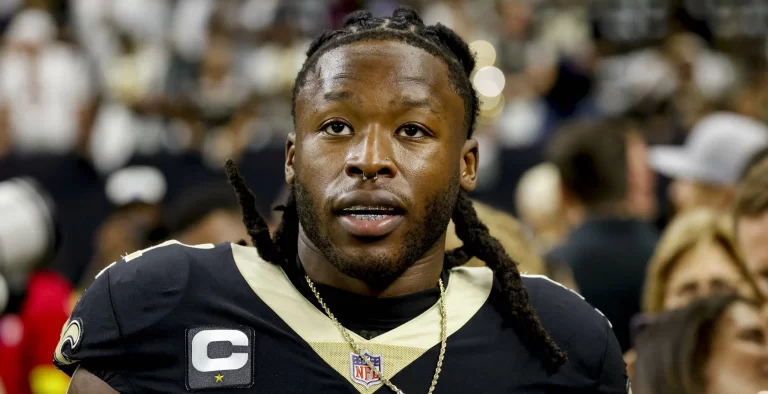
FOREVER IN SAINTS HISTORY: Alvin Kamara Delivers 1,000th Superdome Touchdown, Giving New Orleans a Moment to Cherish
The Caesars Superdome is more than just a stadium. For the people of New Orleans, it is a cathedral of resilience, joy, and unforgettable memories. From the deafening noise of the Dome Patrol years to the miracle ride of 2009, the building has witnessed generations of heroes carving their names into Saints history. On Sunday, even in defeat, another unforgettable chapter was written when Alvin Kamara delivered the 1,000th touchdown ever scored by the Saints inside their hallowed home.
Yes, the scoreboard read 20-13 in favor of the Arizona Cardinals by the final whistle. But if you were inside the Dome — or even just watching from home — there was a moment in the second quarter that made you pause, smile, and realize you were witnessing something that will forever live in the franchise’s story.
Kamara’s Milestone Run
With the Saints facing a third-and-three early in the second quarter, the offense needed a spark. The Cardinals defense had done its job so far, limiting Derek Carr and the passing game to short gains. Then, in a flash, Alvin Kamara reminded everyone why he has been the heartbeat of this offense for nearly a decade.
Taking the handoff, Kamara cut left, found daylight, and accelerated through a gap that only he could see so clearly. The run wasn’t just efficient — it was vintage Kamara. Smooth strides, impeccable vision, and that signature ability to make defenders look like they’re running in slow motion. As he crossed the goal line and celebrated with his teammates, the crowd roared louder than it had all afternoon.
At that moment, fans weren’t just cheering a touchdown. They were witnessing history. That 18-yard dash wasn’t only Kamara’s 87th career touchdown; it was officially the 1,000th touchdown scored by the New Orleans Saints in the Superdome.
Why This Touchdown Matters More
Football milestones come and go. A player scores a certain number of career touchdowns. A team reaches a statistical marker. But the 1,000th touchdown in the Superdome? That’s different.
Why? Because the Superdome isn’t just another NFL stadium. It is a living, breathing symbol of New Orleans. It has hosted Super Bowls, college championships, and concerts that shook the world. But more importantly, it has been the stage for Saints football since 1975 — the good, the bad, and the unforgettable.

From Archie Manning to Drew Brees, from Marques Colston to Michael Thomas, the Dome has seen legends come and go. It has carried the city through storms both literal and figurative. To hit 1,000 touchdowns in that building means you are not just adding to a box score. You are adding to a shared memory that belongs to every fan wearing black and gold.
For Alvin Kamara to be the man to deliver that moment feels perfectly fitting. He has been the face of the Saints’ offense since Drew Brees retired, carrying the torch of excitement and playmaking that keeps fans believing in better days.
Kamara’s Place in NFL History
The milestone wasn’t just about the Saints or the Superdome. It also added another jewel to Kamara’s personal crown.
With 87 career touchdowns, Kamara is now tied with Hall of Famer Lance Alworth for 53rd on the NFL’s all-time list. To put that into perspective: Alworth was an icon of the 1960s, a receiver so dominant they called him “Bambi.” For Kamara to match his number in today’s game — as a running back who does damage both on the ground and through the air — speaks volumes about his versatility and sustained excellence.
And here’s the kicker: Kamara is still just 29 years old. He has plenty of time to climb that list, possibly even cracking the top 25 before his career is over. Saints fans have known for years that Kamara is special, but achievements like this force the national spotlight to acknowledge it too.
The Bittersweet Side
Of course, milestones don’t erase results. The Saints lost 20-13 to the Cardinals, dropping their season opener and raising familiar concerns about the offense. Despite Kamara’s heroics, the passing game sputtered. Derek Carr and his receivers struggled to connect on big plays, and drives stalled too often in enemy territory.
It’s a story Saints fans know all too well. The defense did its job, holding the Cardinals to just 20 points, but without consistent offensive rhythm, it wasn’t enough. That’s why Kamara’s touchdown, as magical as it was, also felt bittersweet. It gave the Dome a reason to explode, but it didn’t translate into victory.
Still, if there’s a silver lining, it’s that milestones like these can become rallying points. Seasons are long, and every team needs moments to hang onto when the going gets tough. Kamara’s 1,000th touchdown could serve as one of those reminders that greatness is still present in New Orleans — and worth building around.
The Legacy of the Superdome
Think about what the 1,000 touchdowns represent.
They are Archie Manning scrambles in the late ’70s, Jim Mora’s gritty teams of the ’80s, the Dome Patrol striking fear into opponents, the heartbreaks of the ’90s, and the rebirth of the 2000s under Sean Payton and Drew Brees. They are Deuce McAllister breaking tackles, Marques Colston stretching out for the end zone, Reggie Bush electrifying crowds, and Steve Gleason’s unforgettable punt block that became a symbol of hope.
Every touchdown tells a story. Every one of those 1,000 scores is a piece of the larger tapestry that makes Saints football unique. Alvin Kamara just added his name to the most recent stitch in that rich quilt of history.
What’s Next for the Saints
The loss to Arizona is just one game in a long season. For head coach Dennis Allen and the offense, the task ahead is clear: find consistency, especially in the passing game. If Carr and his receivers can find a rhythm to complement Kamara’s brilliance, the Saints can still contend in a wide-open NFC South.
Meanwhile, the defense will continue to anchor the team. Led by veterans like Demario Davis and Cam Jordan, the unit is good enough to keep games close. What Saints fans hope is that the offense can catch up before too many more “bittersweet milestones” pile up.
A Moment to Cherish
In sports, results matter. Wins and losses define seasons. But milestones define legacies. Alvin Kamara’s 1,000th touchdown at the Superdome will be remembered long after the disappointment of a Week 1 loss fades.
For fans, it was a reminder of why they love this team, this city, and this stadium. It was a reminder that even when the Saints stumble, moments of magic are always possible in the Dome.
Kamara didn’t just score a touchdown. He carved his name into the very walls of the Superdome’s history, joining a line of legends who gave New Orleans reasons to cheer, cry, and believe. And that, perhaps, is worth celebrating more than any single win or loss.

